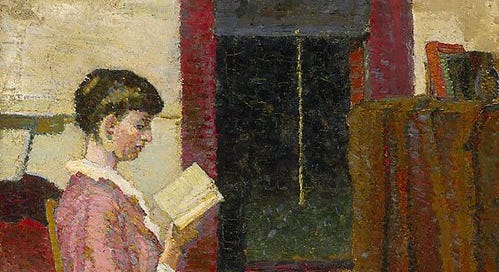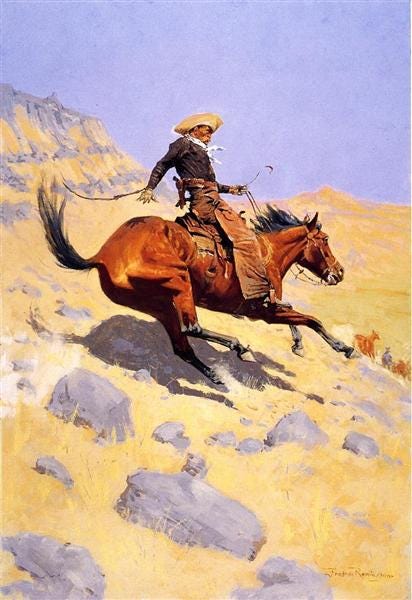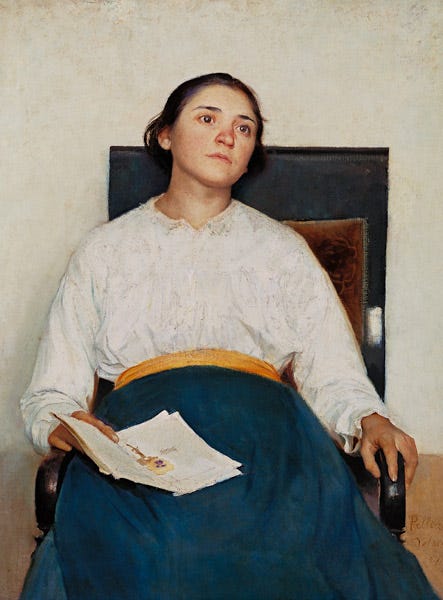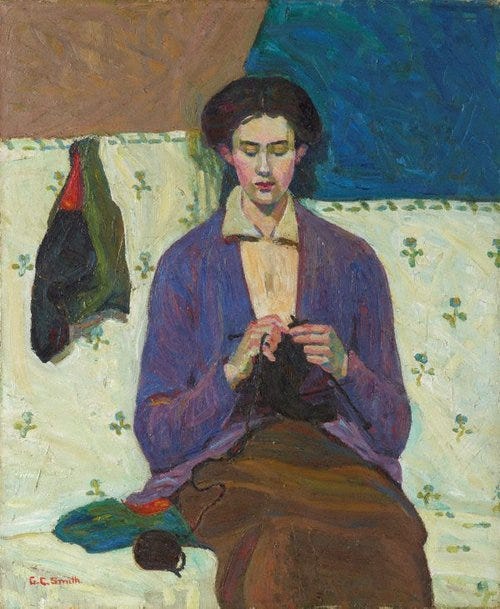Half a Year of Reading
Books read from January to June; re-reads, classic literature, biography, light reading, crime fiction...
This is a long post and it may be read in its entirety if you click on the title above.
Historical Fiction
The Conqueror (1931) by Georgette Heyer - Heyer’s heart was always in the writing of historical fiction, but it was her Regency novels that brought her a livelihood and so the greater part of her time was spent on those. A pity because her research into historical time periods was thorough and gave her stories a biographical nature that got to the heart of her characters. This is the first book that gave me a positive glimpse into William the Conqueror’s side of history. Very enjoyable & suitable for mid-teens and up.
An Infamous Army (1937) by Georgette Heyer - set in Brussels during the British occupation in 1815, the beautiful and outrageous widow Lady Barbara Childe is enjoying the attentions of two dashing soldiers. But then comes the Battle of Waterloo where the man she decides that she loves may not return. Heyer has done so much research in the writing of this book and I decided to read it after I’d finished Les Miserables. Victor Hugo goes into detail about Waterloo in Volume 2 and between these two books you get a comprehensive overview of the battle.
The Sunne in Splendour: A Novel of Richard III (1982) by Sharon Kay Penman - I was a little dubious about reading this 936-page fictionalised account of Richard III by a modern author but as it only cost me $3, I thought I’d try out an author new to me. Penman redeems Richard who was raised in the shadow of his brother, King Edward IV, and depicts him as a serious, likeable and gifted man loyal to his King and his friends; a valiant soldier who later became king, ‘betrayed in life by his allies and betrayed in death by history.’
Les Miserables (1862) by Victor Hugo - I decided it was time to read the actual book after seeing the play twice and movie once. The story itself is so well-known and of course, it has a wonderfully redemptive plot but Hugo’s ramblings almost done me in - Tolstoy’s War & Peace was a walk in the park compared to this (in my ‘umble opinion) and Les Mis is one classic (dare I say it?!) that could be culled in places. The Underbelly of Paris - a look through the Paris sewers!
The Courier of the Czar (1876) by Jules Verne - a less well-known historical novel by the author set in Russia. Beginning in Moscow the Czar’s courier, Michael Strogoff, travels across the Ural Mountains to Irkutz in Siberia to warn the Czar’s brother of a traitor who has joined with the Tartars to overthrow the Russians. An exciting story with a sweet romance. A great read for younger readers who enjoy historical fiction, battles & a heroic protagonist. Having an atlas nearby as you read is recommended.
General Fiction
Father Elijah (1996) by Michael O’Brien - Father Elijah is a refugee from Germany and a famous survivor of the holocaust. A former member of the Haganah, a convert from Judaism & now a Carmelite priest in Israel, he is called to Rome for a special mission.
‘Real suffering is always different from what we imagine.’
‘Even believers can reduce the Faith to a philosophical system. They can retain the exterior forms of religion and lose its heart.’
Home (2008) by Marilynne Robinson - the second book in the author’s Gilead series & my favourite. The prodigal son returns home after 20 years to find his father approaching the end of his life and his younger sister, Glory, with her own sad tale of rejection and disillusionment. A very moving, thoughtful novel about family relationships, parental hopes, despair and faith.
Jack by Marilynne Robinson (2020) - this is the fourth of Robinson’s Gilead novels (Gilead, Home, Lila, and Jack) and Jack is the story of the prodigal John Ames Broughton. Set just before Gilead, Home and Lila, and after WWII, this is the backstory of the relationship between Jack & Della. It takes place in the segregated city of St Louis where relationships between black and white were illegal. It’s the final novel but leaves much unsaid about the outcome of their relationship and the story is fraught with uncertainty, but as was the case with her previous Gilead novels, the writing is graceful and winsome.
The Virginian (1902) by Owen Wister - said to be the first Western novel, it is beautifully written and builds slowly, maybe too slowly for many modern readers. I appreciated the humour and the Virginian’s character qualities - his sense of justice, although flawed. He falls in love with Molly, the newly arrived schoolteacher, but she thinks him beneath her and doesn’t understand his Wild West sensibilities. The action picks up towards the middle of the book and comes to a climax where Miss Molly gets her act together at last.
Cranford (1853) by Elizabeth Gaskell - I love this author and this portrait of life in a quiet English country town where nothing much happens. Most of the residents live uneventful lives & gossip about each other, but when there’s trouble they rise above their pettiness and look after one another.
Some Anthony Trollope…
Can You Forgive Her? (1864-1865) - the first book in the Trollope’s Palliser series. 'What should a woman do with her life?' asks Alice Vavasor who can’t make up her mind between marrying her ambitious, violent cousin, George, or the kind but dull gentleman, John Grey. It takes a few chapters to become invested in Trollope’s characters but his books are always delightful.
Phineas Finn (1869) - Book 2 in the Palliser series centres around Parliamentary life and the handsome young Irish barrister who comes to London after winning a seat in the hopes of making a name for himself in politics.
The Eustace Diamonds (1872) is the third book in his Palliser series. I’ve been reading the series in order but this title works well as a stand alone, although she does pop up later in the series. It’s a ‘novel about the scandal and yet the ubiquity of lying’ and is the closest Trollope came to writing sensation fiction. Lizzie Eustace (nee Greystock) is the anti-heroine and the ‘infernal little liar’ of this story and it’s a great read!
It was admitted by all her friends, and also by her enemies, - who were in truth the more numerous and active body of the two, - that Lizzie Greystock had done very well with herself. We will tell the story of Lizzie Greystock from the beginning, but we will not dwell over it at great length, as we might do if we loved her.
Lizzie is quite an awful character but when Trollope writes about horrible people he does so in a way that doesn’t write them off completely and leaves you thinking that someday they might redeem themselves or at least get their just desserts at some later date. And she does somewhat, but you’ll have to keep reading the series to find out how.
Phineas Redux (1874) the 4th Palliser book. Phineas had left his Parliamentary life and returned to Ireland. When his young wife dies, he returns to the political arena once more but when his political foe is murdered, all the evidence points to Phineas, and he is tried at the Old Bailey. With his reputation in tatters and the press circulating scandalous material about him, Phineas is brought very low and believes that he will be hanged.
I wasn’t expecting to enjoy the Palliser books with their Parliamentary focus as much as I did The Chronicles of Barsetshire which has an ecclesiastical setting, but I’ve been pleasantly surprised and look forward to the next two books in the series.
Dr. Whortle’s School (1879) - a standalone Trollope title and a good book to begin with if you’re not familiar with him as it’s only 273 pages in length and considerably shorter than those mentioned above. Dr. Whortle engages Mr. Peacocke, a Classical scholar, to teach in his school but a scandal erupts when it is discovered that his wife is still supposedly married to another man and that man’s brother is trying to blackmail the Peacockes. This is a great story of loyalty and friendship as Dr. Whortle stands by the couple when they are ostracised by society.
Edith Wharton
The Custom of the Country (1913) by Edith Wharton - here is another awful female character! Undine Spragg is a beautiful young woman who has her parents wrapped around her little finger. Ambitious and completely selfish, she convinces them to move from the Midwest to New York to enable her to climb the social ladder while expecting them to provide for all her wants. Undine and Lizzie Eustace have much in common. They each had a son from a previous marriage, they both neglected their child, and their first husbands didn’t stand up to them.
The Age of Innocence (1920) by Edith Wharton - set in New York around the 1870’s, this novel won the Pulitzer Prize for fiction in 1921. Newland Archer is engaged to be married to May Welland but when her cousin, Countess Ellen Olenska returns to New York after separating from her European husband, he finds himself drawn to her and in a situation where he is torn between his duty to May and his passion for the exotic Ellen. This story reminded me a little of her devastating novel, Ethan Frome. Newland is on the brink of destroying his life but the Countess has a better sense of what there is to lose if they give in to their passion for each other. Wharton always surprises me in the end!
Non Fiction
Education of a Wandering Man by Louis L’Amour - I enjoy reading what has shaped and educated others and although there were some interesting stories, the author grated on me with what sounded like a comprehensive brag of what a great reader he was and how much he had done during his life. There are lists of books he had read over his lifetime but not that many I’d be inclined to read so I was disappointed overall and struggled to finish it. I have to say that I’ve only read one of his novels, The Last of the Breed, which I did enjoy, so maybe take my opinion on this one with a grain of salt.
Oh Jerusalem! (1971) by Larry Collins and Dominique Lapierre - last year I read Exodus by Leon Uris (1958), a historical fictional account of the beginning of the State of Israel. Oh Jerusalem! is a historical account based on years of research and interviews by the authors. I thought the authors were very even-handed in their approach. A very readable account that captures the drama and political undercurrents of the time.
Solzhenitsyn: A Soul in Exile by Joseph Pearce (1999; Revised & Updated 2001) - one of the most readable and interesting biographies I’ve read for awhile & I only picked it up at a book sale when I saw that it was about Solzhenitsyn. The author had extensive personal interviews with Solzhenitsyn in Moscow in 1998 and he considered his 1999 book to be unfinished. This second (2001) edition contains four more chapters and provides a perspective on Solzhenitsyn’s eighty-nine years of life. I’ve read a few books by Solzhenitsyn and this biography placed those works in the context of his times. He was indeed a prophet.
Both the communist East and the capitalist West suffered from the same disease: ‘‘the ailment of materialism, the ailment of inadequate moral standards. It was precisely the absence of moral standards that led to the appearance of such a horrible dictatorship as the Soviet one, and of such a greedy consumer society as the West’s.’’
Fishing in the Styx (1993) by Ruth Park - an autobiography from a beloved New Zealand/Australian writer. Park married fellow author, D’Arcy Niland and this is an honest portrait of their marriage and their literary partnership. It isn’t a book I would have picked up, but my sister liked it and gave it to me to read and I thoroughly enjoyed it.
Re-reads
The Mayor of Casterbridge (1886) by Thomas Hardy - this is one of my favourite Hardy novels but it doesn’t seem as popular as some of his others. It really deserves to be better known for its exploration of the character of a double-minded man who is completely led by his emotions. My first introduction to Thomas Hardy was Tess of the D'Urbevilles, which I thought was very fatalistic and quite depressing (although his writing style is just lovely) and probably not the best book to start with. The Mayor of Casterbridge still retains some of this fatalism but it has more to do with the character of the protagonist, Michael Henchard - as Hardy said in reference to him, 'Character is Fate.'
Young Michael Henchard gets drunk and sells his wife and young daughter to Richard Newson, a sailor passing through the village fair. The next day, when Henchard is sober and remorseful, he searches for his family but it is many years before he sees his wife, Susan and her daughter again. Twenty years later, with Newson missing presumed lost at sea, Susan arrives in Casterbridge with her daughter to seek out Henchard and they are reunited as man and wife. But has he learnt anything from the effects of his rash behaviour? The proverb, 'A double-minded man is unstable in all he does,' sums up Henchard's character. The story makes a powerful statement on the issue of personal character. Our decisions, attitudes, actions and reactions over time reveal our true character.
This Present Darkness (1986) Frank Perretti - I decided to re-read this after I read Father Elijah as it, too, deals with spiritual warfare. While it takes some liberties theologically and doesn’t have the literary power of O’Brien’s book, it does help to illuminate the reality of the unseen world that we in the West often don’t consider.
The Man in the Brown Suit (1924) by Agatha Christie - I first read this 10 years ago and it’s a fun story, fast paced and delightful. Anne Beddington, an attractive young woman, is left orphaned and penniless when her archaeologist father dies. When she witnesses the accidental death of a stranger who falls and is electrocuted on an Underground platform, she also sees a man in a brown suit examine the body, pronounce him dead, and then quickly leave. As she turns to go also, she sees the 'doctor' break into a run, dropping a piece of paper as he does so. With this piece of paper and its cryptic message, Anne embarks on a journey which takes her all the way to South Africa on a wild adventure. With a backdrop of political intrigue and murder, stolen diamonds, kidnappings and threats on her own life, Anne determines to solve the mystery of the man in the brown suit.
The book is written by two narrators: Anne, and Sir Eustace Pedler, MP. I really enjoyed the humour sprinkled throughout this book, which was in keeping with Anne Beddington's personality, and the conclusion of the story was novel and unexpected. It's an excellent introduction to Agatha Christie for ages around 14 years and up.
The Scent of Water (1963) by Elizabeth Goudge - a lovely story with an unusual protagonist. Elizabeth Goudge really excelled in her characterisations and this book is peopled with some interesting and loveable characters. Her characters are always flawed people, but she never leaves them without hope and one of the attractions of her writing is her gift of bringing these persons to a better place than they were at the beginning.
Light Reading
Much of my lighter reading is on the whim such as when I’m reading a book that requires a lot of concentration/brain and need a less taxing book to turn to from time to time, when I’m feeling tired or not a hundred percent, or I come across a Golden Age crime novel I haven’t read before. This year I’ve read a number of books by Patricia Wentworth, an author I started reading last year. Wentworth (1877-1961) was a British crime author who was as popular in the 1940’s as Dorothy Sayers and Agatha Christie. Her Miss Silver mysteries were written from 1928 to 1961 and feature the dowdy former governess, Maud Silver, who has a knack of solving crimes.
By some means best known to herself she possessed the art of turning back the clock until the state of tension and fear in which so many of her visitors found themselves gave way insensibly to the atmosphere of the schoolroom.
Miss Silver likes to quote Tennyson, Oh, trust me all in all, or not at all, and she knits while her clients explain why they have come to see her. Known and respected by Scotland Yard, one of her former students, Frank Abbott, is a Police College graduate, and a Detective Sergeant with the Yard. The books are suitable for younger readers interested in the genre. The following are the books I’ve read this year. The titles I enjoyed most are marked with an.*
*The Grey Mask (1929)
The Chinese Shawl (1943)
*The Case of William Smith (1950)
Miss Silver Intervenes (1944)
The Case is Closed (1937)
*Danger Point (1942)
*The Key (1946)
A Pocket Full of Rye by Agatha Christie (1953) - A Miss Marple mystery with a clever plot and last-minute evidence that convicts a shrewd murderer. A satisfying read!
If you liked this article and would like to show your appreciation, you may…








I've only read one Anthony Trollope, only it was long ago before I started keeping track of my reading and I don't recall the title. What is a good one to start with? I loved Father Elijah (have read it several times), Les Miserables (I remember crying at all the indignities Fantine suffered), The Scent of Water, Cranford (the movie version is fun too) and some of Marilynne Robinson's books. I have The Custom of the Country on my nightstand, so we'll see when I get to it. I'm reading Laurus now and it's quite intense... Your post reminds me maybe I'll do a half year of reading post because I tried doing a full year and felt I couldn't give some books justice and it was just too much for my poor brain!
I still haven’t read any Anthony Trollope…any suggestions on what would be a great one to start with?
I love your lists; thank you for sharing them!